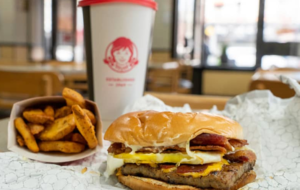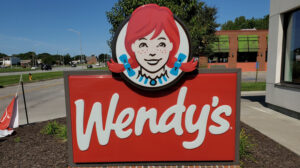Wendy’s, a popular fast food chain, recently caused a stir among its dedicated customer base by revealing intentions to introduce a dynamic pricing system similar to Uber’s ‘surge pricing.’ This discIosure, initially reported by DailyMail.com, sparked widespread skepticism and worry among consumers, economists, and retail experts regarding its potential consequences.
Social media platforms quickly became a platform for expressing discontent, with users vehemently opposing the idea of surge pricing for Wendy’s menu items.

Some individuals questioned the reasoning behind paying higher prices for what they considered an average burger, while others compared the proposed pricing strategy unfavorably to a happy hour concept.
Online images circulated of consumers humorously hoarding Wendy’s products to bypass surge pricing, indicating a prevalent sentiment of resistance against fluctuating menu prices. Many voiced their dislike for the idea, predicting that it would discourage them from visiting Wendy’s altogether.
The CEO of the franchise announced plans to implement dynamic pricing, which involves adjusting menu item costs based on demand throughout the day. This approach could lead to increased prices during peak hours such as breakfast, lunch, and dinner, with reductions during quieter times.
Despite Wendy’s attempt to innovate its pricing model, the backlash on social media portrayed a negative outlook on consumer sentiment. Concerns were raised about the unpredictability and inconsistency of fluctuating prices, highlighting the potential for confusion and frustration among regular customers.

Critics argued that such a pricing strategy might alienate loyal patrons and ultimately undermine the appeal of fast food as a convenient and affordable dining option. Author David Dennis Jr. lamented what he perceived as greed behind the decision, suggesting that it could contribute to the fast food industry’s decline.
Retail analysts predicted the outrage over dynamic pricing, citing consumer surveys indicating a strong aversion to such practices. Most respondents viewed dynamic pricing in restaurants as akin to price gouging, reflecting broader skepticism towards fluctuating costs.
In the face of the backlash, Wendy’s may encounter challenges in convincing consumers of the benefits of its dynamic pricing strategy. The controversy highlights the delicate balance between innovation and consumer trust in a fiercely competitive market.
As the fast food giant deals with the aftermath of its pricing announcement, it remains to be seen whether it will proceed with its plans or reconsider in response to vocal opposition from its customer base. The debate over surge pricing at Wendy’s serves as a cautionary tale about the risks of tampering with established pricing norms in pursuit of profitability.



